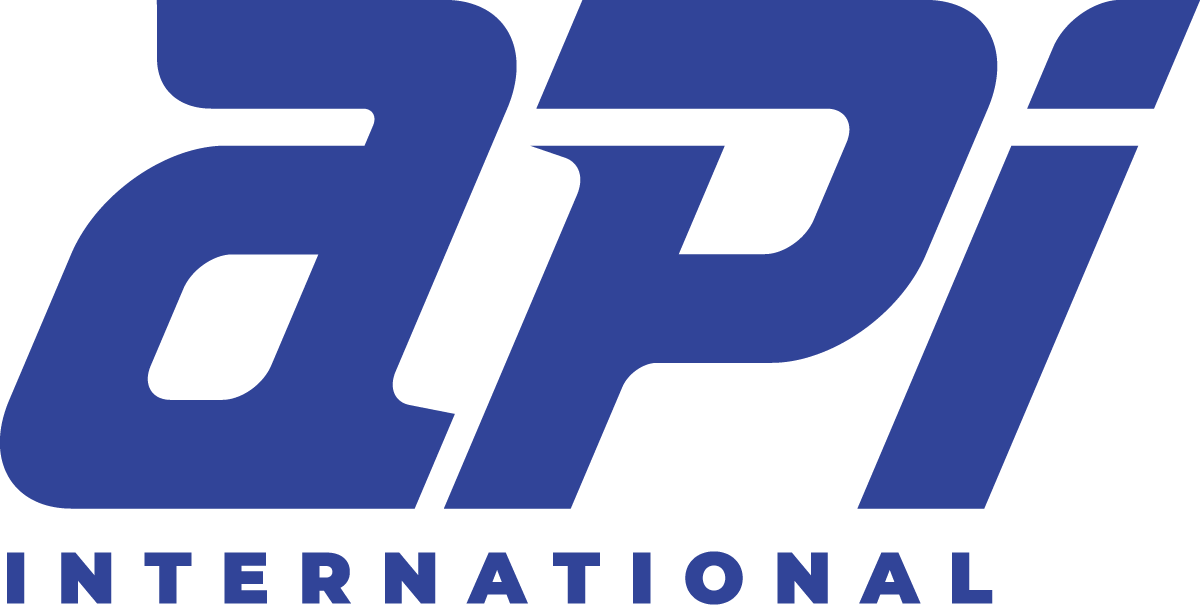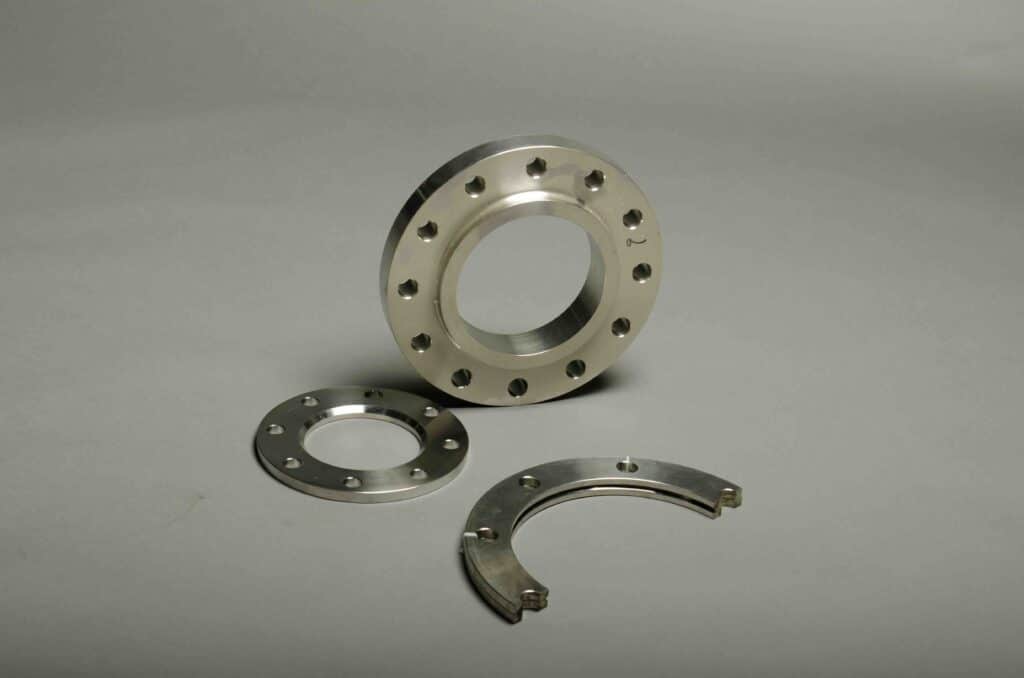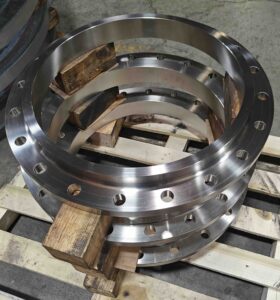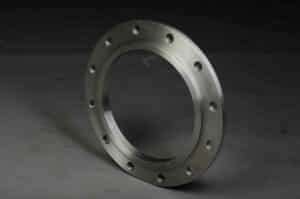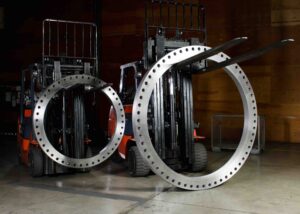Major Causes of Flange Damage
1. Improper Bolting Practices
- Over-tightening crushes the gasket or distorts the flange face.
- Under-tightening leaves insufficient preload, leading to leakage.
- Uneven torque across the bolt circle produces localized stress, bending the flange or unevenly loading the gasket.
Example Table: Effect of Bolting Errors
| Error | Result | Typical Consequence |
|---|---|---|
| Over-tightening | Excessive flange stress, gasket crushing | Permanent distortion, leaks |
| Under-tightening | Gasket not fully compressed | Leakage, blowouts |
| Uneven tightening | Stress concentration | Flange warping, bolt fatigue |
2. Misalignment and Poor Assembly
- Off-center gasket installation reduces the effective sealing surface.
- Skipping bolts or tightening in a circular sequence (instead of a cross-pattern) causes distortion.
- Misaligned piping pulls flanges out of plane, creating long-term bending stress.
3. Corrosion and Crevice Attack
Corrosion remains a leading reason of flange damages, especially in aggressive and corrosive environments. Crevice corrosion between the gasket and flange face is one of the most insidious problems, leading to progressive leakage.
Example Table: Corrosion Types Seen in Flanges
| Corrosion Type | Location | Effect |
|---|---|---|
| Crevice | Between gasket and face | Surface attack, leakage path |
| Uniform | Flange body, exposed areas | Wall thinning, strength loss |
| Galvanic | Bolt/flange/gasket interfaces | Accelerated localized attack |
| Pitting | Flange face surface | Gasket sealing failure |
4. Surface Damage and Handling Defects
Common sources of damage include:
- Using chisels or screwdrivers to remove old gasket material.
- Dropping or stacking flanges during transport.
- Improper storage without protective covers.
! Preventive guidance: Keeping flange faces covered with plastic or metal protectors during storage and transport prevents dents and scratches. Following ASME B16.5 surface finish requirements ensures the face stays smooth enough for proper gasket sealing.
5. Thermal Stress and Mechanical Vibration
- Thermal cycling: Repeated heating and cooling expands bolts and flanges, relaxing preload.
- Mechanical vibration: Pumps, compressors, or nearby machinery introduce oscillations that loosen bolts or cause fretting wear.
| Factor | Typical Range / Value | Effect on Flange Joint | Field Indicators |
|---|---|---|---|
| Thermal cycling | 20–200 °C swing | Bolt preload loss of 10–25% per cycle cluster | Need for re-torque after initial service |
| Mechanical vibration | 5–200 Hz | Self-loosening of bolts after ~10⁶ cycles | Backed-off nuts, fretting dust on faces |
6. Material or Design Limitations
- Thin flange sections may deform under load.
- Low-strength bolts may elongate or yield prematurely.
- Incompatible gaskets may harden, creep, or degrade chemically.
Example Table: Common Material Mismatches
| Component | Wrong Choice | Result |
|---|---|---|
| Flange | Carbon steel in chloride-rich service | Rapid corrosion |
| Bolts | Low-grade carbon steel in high temperature | Bolt relaxation, failure |
| Gasket | Elastomer in high steam temperature | Hardening, blowout |
! Preventive guidance: Compliance with AWWA/DIN/ASME/ANSI material specifications ensures the correct selection of pressure class, temperature rating, and fluid compatibility. Following these requirements helps prevent premature deformation or failure caused by material mismatch.
7. Assembly and Maintenance Errors
- Reusing gaskets that should be replaced.
- Skipping bolt inspection or retightening after thermal cycles.
- Using uncalibrated tools.
- Ignoring manufacturer or AWWA/DIN/ASME/ANSI standard guidance.
Which Types of Flange Damage Occur Most
| Type of Damage | Primary Causes | Consequences / Indicators |
|---|---|---|
| Leakage / Seal Failure | Improper bolting, gasket misalignment, corrosion, surface damage | Drips, pressure loss, fluid escape |
| Plastic Deformation | Overload, misalignment, thin flange | Warped flange faces, gaps, inability to seal |
| Cracking / Fatigue Failure | Cyclic stress, vibration, design flaw | Visible cracks, structural breaks, bolt fractures |
| Bolt/Gasket Failure | Bolt fatigue, corrosion, improper torque | Broken bolts, gasket blowout, bolt threads stripped |
| Face Surface Damage | Handling, cleaning, corrosion | Scratches, pits, gouges reducing sealing integrity |
Strategies to Prevent Flange Damage
- Defined torque procedures combined with calibrated torque tools provide consistent and reliable bolt loading.
- A cross-pattern tightening sequence, carried out in gradual steps, helps ensure uniform pressure distribution across the flange joint.
- Proper selection of gasket type and material minimizes the risk of premature leakage or material degradation.
- Protection of flange faces during storage, transport, and installation prevents scratches and dents that compromise sealing integrity.
- Periodic monitoring of joints for leakage, bolt tension, and early signs of corrosion is necessary for maintaining long-term performance.
- In systems with heat changes or vibration, spring washers or live-load bolts help keep bolts tight and prevent loosening.
- Flanges, bolts, and gaskets should be selected with materials that provide compatible levels of corrosion resistance.
- Personnel training, supported by standardized operating procedures (SOPs), will ensure consistent assembly practices and minimize the influence of human error.
